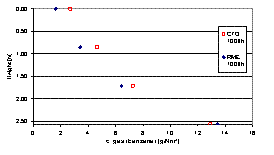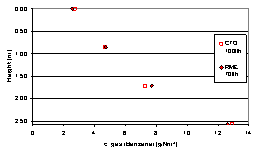293f Biodiesel – An Efficient Absorbent for the Recovery of Aromatic Hydrocarbons
Introduction
This contribution is dealing with the applicability of biodiesel (RME) for the recovery of aromatic hydrocarbons as an alternative washing liquid to conventional absorbents, whereby mainly diesel oil and coal tar oil (CTO) are used. Based on studies on a typical large-scale, industrial process it will be shown that biodiesel is not only presenting an alternative washing liquid for the regarded separation task, moreover due to higher absorption rates it is also offering a possibility for the reduction of operational as well as investment costs. To exemplify the improvement when using biodiesel, the coke-oven gas purification process is regarded in this case study.
In conventional coke-oven plants aromatic hydrocarbons, i.e. benzene, toluene and xylene, are recovered from coke-oven gases by using complex polyaromatic mixtures as absorption liquids like coal tar oil. In order to simulate the regarded process of absorption as well as desorption more accurately entire studies are carried out concerning thermodynamical properties as well as phase equilibrium behaviour of coal tar oil which is more favourable than diesel oil in this process. Based on these studies a rate-based approach is implemented in FORTRAN which is validated using experimental data from a pilot plant. For an accurate comparison of biodiesel and coal tar oil, experimental as well as simulation studies are carried out in order to demonstrate the advantages of the alternative absorbent.
Experimental Studies
In previous publications it was shown that due to lower values of the volumetric related Henry coefficients, the solubility of aromatic hydrocarbons in biodiesel is about 30% higher than in coal tar oil. Therefore studies are carried out in a pilot plant for both washing liquids. For the experiments a column equipped with structured packing of 2.6m of height and a diameter of 0.1m is used for studying the absorption capacity under bench-scale conditions. Hereby the volumetric gas flow is adjusted to an F-factor of 1.5 Pa1/2 and loaded with different inlet concentrations of benzene and toluene. During the experiments different liquid loads are studied, on the one side for the validation of the implemented models and on the other side in order to analyze the improvement in the absorption rate when using biodiesel. In Fig. 1 a comparison of the analyzed washing liquids is shown for identical liquid loads. It can be seen that in case of biodiesel the gas profile of benzene is shifted to lower concentrations compared to coal tar oil. In order to point out the improvement of absorption rate the liquid load of Biodiesel is reduced in the second case until the concentration profiles are matching each other. Fig. 2 is demonstrating the savings in case of using biodiesel which is leading to a reduction of 30% of liquid load whereby almost the same absorption rate is obtained.
|
|
|
Fig.1: Gas concentration profiles of benzene for identical liquid loads |
| Fig.2: Gas concentration profiles of benzene for reduced liquid load |
Simulation studies
In order to optimize operational and investment costs, the energy consuming desorption as well as heat exchanging processes are also regarded in the second part of this contribution. Caused by different thermodynamical properties like heat capacity and boiling range, an alternative process layout will be available. Thus the applicability of biodiesel will be studied regarding the whole process. Based on comparisons of cost functions, the advantages of the alternative absorption liquid are presented. Thereby savings in operational and investment costs are regarded.

